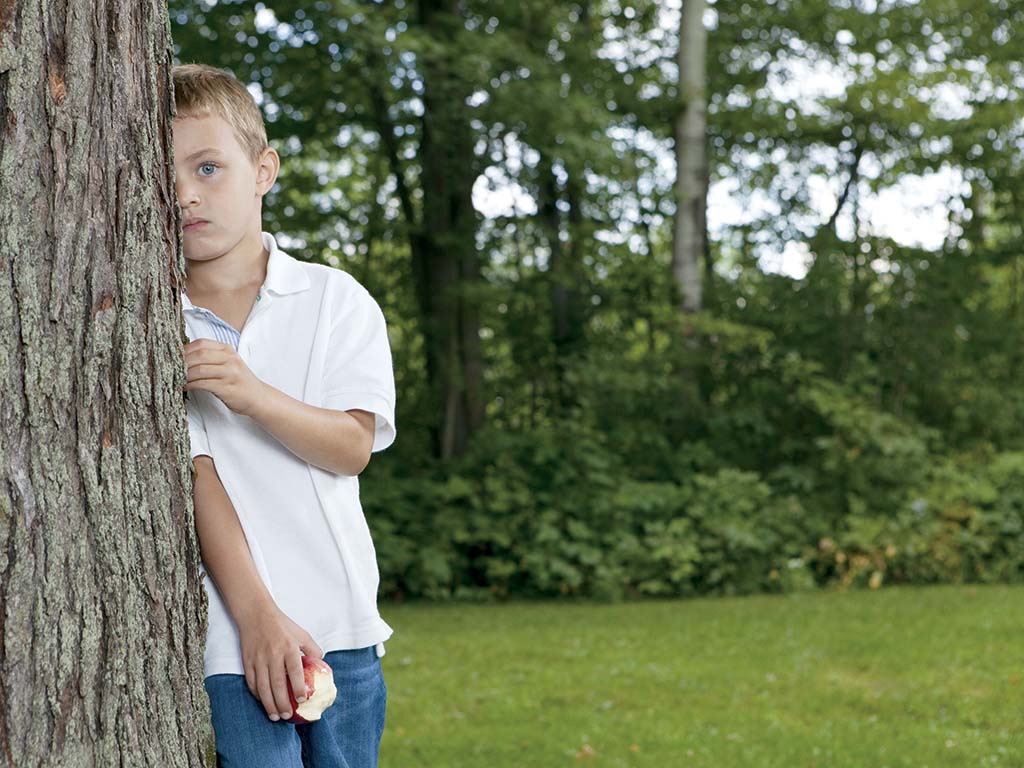by Stephanie Frank
I am helping a student with her math homework after school. She loves math, but in class they have been doing group projects and presentations. “Please participate. Raise your hand. Share your thoughts,” her teacher always tells her. But instead of delving into the conversations of the class, she slouches down and reverts to the safety behind her desk. “I’m shy,” she explains. “I’m just shy.”
How can I help her? Should I have continued to probe further? Are you feeling anxious, happy, angry, or confident? Do you have friends? What do you discuss with your parents? Are you bullied? Should I have recommended to her parents that she see a counselor or have an academic evaluation? Or do I even need to drastically help her? Should I have replied: A lot of people are shy. It’s a normal, healthy, and even helpful way to be? Depending on the child and further observation, all of these responses could have been correct.
Many children feel timid. In fact, shyness as a whole is quite common and even normal, despite what our society’s perception may be. Dr. Kathleen Marikangas, a senior investigator at the National Institute of Mental Health, collaborated with colleagues to publish a study of 10,000 middle to high school children. “We found that about half of kids in America describe themselves as shy,” she says.
It is also important to note that before age two, many children are bubbly and interactive, acting before they think in social situations, but between two and four years old, children go through a phase of ‘stranger danger,’ becoming afraid of people they do not know.
Since a wide range of shyness exists – ranging from extreme shyness to shyness simply being a part of their personality – it is important to listen and observe your child to see how you can help him or her.
The Shyness Spectrum
“Who are you? Where am I?!” Most shy children do well in relationships after an initial adjustment period. At first these children may hide behind mom or dad, not making eye contact with the new acquaintance and feeling very timid, but after an ice-breaking period and practice with social interaction, these children will become comfortable with the environment and know how to interact when confronted with a new face in a new place.
“I want to make more friends. How?” Most children want to be included and liked, yet some merely do not know how to make friends. These children may hover around groups of kids playing on the playground but never really get noticed since they do not know how to take initiative. A simple conversation of “Hello. Can I play with you?” may be the cure to their phobia.
“I just want to be alone. I would rather play with my toys than my classmates.” These children may be called ‘loners’ and may detest or prefer their isolation. Their shy personality may cause them to revert to their own quiet place in a corner of a room or buried in a book, or they possibly have not developed social skills or the self-confidence to interact with others.
“Why are they always teasing me?” Some children may want to have a lot of friends but may be excluded from one group or another. Perhaps they are teased for not having ‘the right’ clothes, backpack, speech, or body type. Children may also be lamentably rejected if they have aggressive or disruptive behavior. These children who may seem shy since they do not have a lot of friends may actually be bullies and rule-violators, or they may lack self-confidence and not stand-up to the schoolyard teasing.

Severe Shyness
Since the majority of shyness is a personality trait and not a fault, practice and encouragement can often help children feel more comfortable in social situations. However, Dr. Merikangas’s study found that about five percent of adolescents in the study were severely restricted by social anxiety. If your child has struggled with debilitating social anxiety for months even after you have tried many of the below recommendations, then an evaluation by a child mental-health professional would be helpful. Treatment usually involves cognitive behavioral strategies to help the child cope with anxiety.
Shyness To Self-Confidence Strategies
Don’t apologize.
If your child begins to hide behind your legs, it is not necessary to apologize, especially in front of your child: “I’m sorry. He is a shy child.” Often there are a lot of positives associated with being shy; some ‘shy’ children are cautious and deep-thinking, value certain friendships, and have an inner peace. Labeling your child may give him or her permission to remain introverted and may cause him or her to feel a greater lack of self-esteem. To value your child’s personality, do not apologize for it. Instead, if you must discuss your child’s personality with a teacher or friend, you can say your child is ‘reserved’ instead of ‘shy’ or ‘focused’ instead of ‘quiet.’
School success.
Forming a partnership with your child’s teacher and familiarizing yourself with the curriculum expectations, schedule, and activities in your child’s class are the first steps to being able to help your child. Once you know more about your child’s schooling you can begin to work with the teacher to build inner confidence in your child.
Bring favorites to school.
If your child loves a certain book, shell collection, rocks or trains, ask your teacher if he or she can bring it to school. Ask the teacher if an informal sharing station could be set up where your child can discuss his or her favorite object. Even if your child is not ready to speak right away, just having his or her favorites in class could help to melt the shyness away.
Find a buddy.
Ask the teacher if your child can be paired with a friendly new student in the class. “The most important first step for a shy child is just to find a friend,” says Dr. Ken Rubin, Director of the Center for Children, Relationships, and Culture at the University of Maryland. This new friend can help your child to make more friendships and participate in class and playtime activities.
Be his or her student.
Give your child the opportunity to practice concepts learned in school in the comfort and quietness of home. While not pressuring your child to learn more, they may feel relaxed and begin to grasp concepts that will cause them to feel more confident when they are surrounded by the peers and pressures of the classroom. You can even role-play school by pretending you are the student and your child is the teacher.
Focus on accomplishments.
Doing fun and easy school activities at home is an excellent way to ease participation fears. If you child is a singer or great at math, make these activities a part of your evening routine, and your child will be sharing their strengths in no time.

Playdates
Having to interact with another child directly can cause a lot of anxiety in a reserved child. For the first meeting, have the other child come to your house and prepare a lot of fun activities. As your child becomes more comfortable, try a change of scenery—Chuck E Cheese’s or the beach – and then eventually the other child’s house. If these playdates are successful, this new friendship can be used to begin other activities, such as sports or music, as the duo can go together.
Parties
Large groups of people with a lot of stimulation can make a reserved child panic, even if they have met many of the people before. Try to keep parties as simple as possible for shy children; limit clowns, noisemakers, and huge gatherings. Talk to your child beforehand about who will be at the party and whether your child has met the guest before. Also, arrive early. “It’s much easier for a shy child to meet other guests one at a time, rather than when everything’s in full swing,” explains Dr. Rubin.
Grown-Up Encounters
The age and height difference of adults can cause shy children to become intimidated during conversations. Review basics of good manners with your child and be an example of these good manners yourself. When you are out with your child, encourage him or her to hold doors open, accept receipts from cashiers saying “thank you,” ask the librarian for a book, or greet a familiar face. Many small encounters like these, even if your child struggles, can boost your child’s self-esteem.
A child’s reserved nature can be a positive strength, as he or she becomes self-assured enough to respond in a number of social situations – whether saying hello to auntie, starting school, or going to a party. While starting to interact may be difficult, continue to patiently encourage your child, even allowing him or her to struggle before immediately stepping in to respond. It can be tough for a child to embrace the unfamiliar, but having self-confidence in a variety of situations is a lifelong skill.





